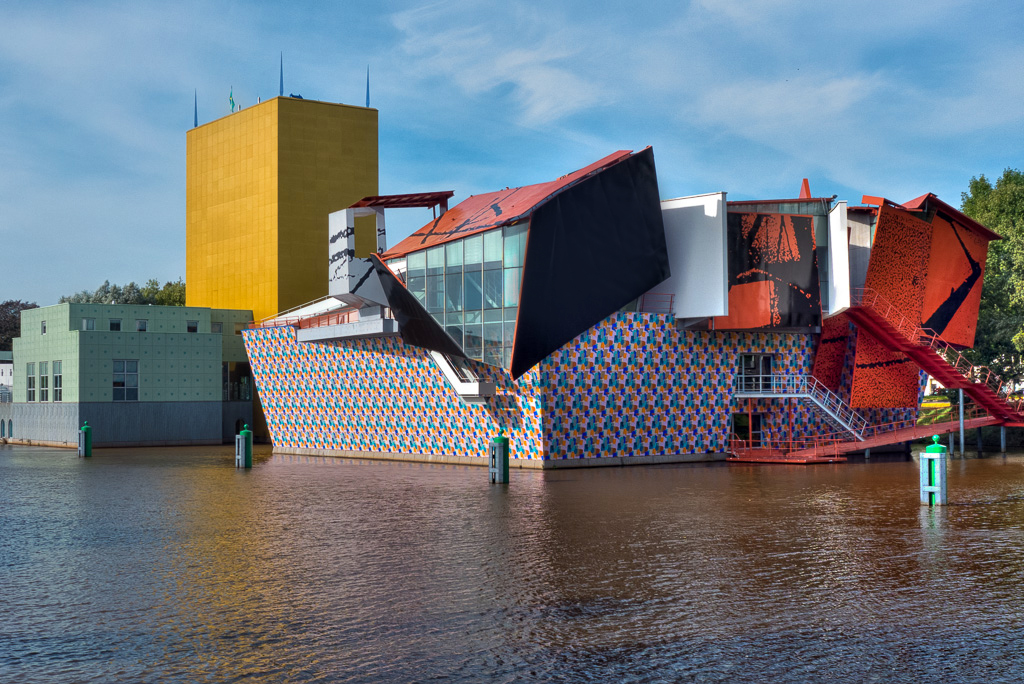Part 5 of a 5 Part Series
As the industrial magic that enveloped Italy in the post WWII era took hold, designers across a broad range of applied arts came to the forefront. Where many designs from Europe and the U.S. took on a less decorative and functional style, it was the Italian designer that proved to the world that simple and functional did not have to mean drab and boring.
Marco Zanuso was born in Milano, Italy, on May 14, 1916. He was one of a group of Italian designers from Milan shaping the international idea of good design in the postwar years. Trained in architecture at the Politecnico di Milano University, he opened his own design office in 1945. From the beginning of his career at Domus, where he served as the editor from 1947 – 1949 and at Casabella, where he was editor from 1952 – 1956, he helped to establish the theories and ideals of the energetic Modern Design movement. As a professor of architecture, he also had a distinct influence over the next design generation coming out of Italy.
The major pieces of his career run a broad spectrum from early experiments in bent metal and luxurious plush furniture to sleek industrial designs in plastic. The underlying motif throughout each phase of his work was to develop a use and market accessibility for every different material that he worked with. Some of his first work to be shown was at the Low-Cost Furniture competition sponsored by the MoMA in 1948. His design featured a metal frame chair that used a breakthrough method to join the fabric seat to the frame. In 1948, Pirelli opened a new division, Arflex, to design seating with foam rubber upholstery. They commissioned Zanuso to produce their first models. His “Antropus” chair came out in 1949, followed by the “Lady” chair, which won first prize at the 1951 Milan Triennale. Zanuso lauded the new material, “One could revolutionize not only the system of upholstery, but also the structural manufacturing and formal potential…our prototypes acquired visually exciting and new contours…with industrial standards that were previously unimaginable.”
Different items of his work in the collections of the Museum of Modern Art in New York City, Triennale Milano, Triennale Tokyo, Vitra Museum, Arflex Museum and Kartell Museum.
As much as Pirelli embraced the use of foam rubber as a new area of business, Olivetti integrated the concept of design in all facets of its business. If you enter some of the whiz-bang stores of high-tech gear today, the design aesthetic of the stores are as sleek as the products themselves. Even though the new Apple store design has tried to introduce a more human feel with fichus trees and natural materials, such as leather and wood, its overriding image is still decidedly corporately futuristic. Before there was Apple, there was Olivetti. Before there were computers, it was the typewriter that ruled the day. Olivetti created bold graphics, advertising and showrooms that harnessed the selling power of great design, but carried it off with a design flair that made business machines cool.
Olivetti was founded in 1908 as a typewriter manufacturing company. It created an in-house graphic design department in 1937, headed up by Italian graphic designer Giovanni Pintori from 1940 until 1967. Recognizing the importance of design over pure functionalism, a concept largely owed to the founder’s son, Adriano Olivetti, the company went on to produce some of the most important business equipment designs and early computers of the 20th century. The company’s practice of commissioning leading designers, architects and artists helped Olivetti to create striking designs for everything from its graphics to the company’s showrooms. Olivetti’s print and video ads are considered to be pioneering efforts that communicated complex, extensive information while using a bold, simplified aesthetic.
An important movement in the mid to late 20th century was Postmodernism. Rather than the concept that it seems to imply, Postmodernism marked a cultural shift across the arts and architecture that represented a sharp turn away from modernism. It can be broadly categorized by an attitude of skepticism, irony and irreverence, in other words, a disregard of the traditional form and a desire to emote a feeling and impression over function. In Italian design, the “Radical Period” was a continuation of Postmodernism and took place in the late 1960s, with a shift in style among the avant-garde.
Postmodernism was led by Alessandro Mendini, as the editorial director of the magazines “Casabella,” “Modo” and “Domus.” Born on August 16, 1931 in Milan, Mendini is both a designer and an architect. Even though he is well into his 80s, he has continued to play an important part in the development of Italian design. He also still teaches at the University of Milan. Mendini’s design has been characterized by his strong interest in mixing different cultures and different forms of expression, creating works that range from graphics to furniture, interiors to paintings and of course, architecture.
Mendini graduated from Politecnico di Milano in 1959, with a degree in architecture and worked as a designer with Marcello Nizzoli. He changed the landscape of modern design through his quintessential works of postmodernism, such as the Proust Armchair and the Groninger Museum. Just as works of the Renaissance period expressed human values and sensibilities, Mendini has contributed to bringing into the heart of design values and sensibilities that had been eclipsed by commercialism and functionalism. Sometimes his work has an “off-the-wall” appeal, as can be seen In the Groninger Museum, at other times, it is simply endearing as well as enduring, such as the Mendini Corkscrew.
As an architect, he designed numerous famous buildings including the Alessi Headquarters in Omegna, Italy; the theater complex “Teatrino della Bicchieraia” in Arezzo, Tuscany; the Forum Museum of Omegna; the Groninger Museum in The Netherlands and the Arosa Casino in Switzerland. The Groninger Museum is considered one of the most important postmodern buildings of the late 20th century and was also selected as one of the “1001 Buildings You Must See Before You Die.”
The mastery of Italian design has been evident in civilization since the ancient Romans and continues to evolve. One thing however remains consistent – there is nothing quite like Italian design.





